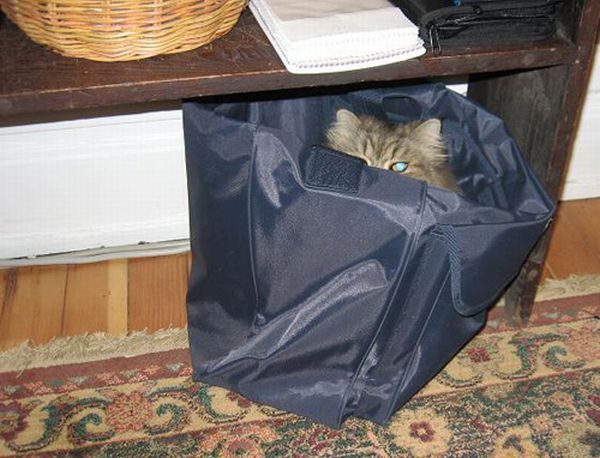|
|
Hiding Cat
|
Cats conserve energy by sleeping more than most animals, especially as they grow older. The daily duration of sleep varies, usually 12–16 hours, with 13–14 being the average. Some cats can sleep as much as 20 hours in a 24-hour period. The term cat nap refers to the cat's ability to fall asleep (lightly) for a brief period and has entered the English lexicon—someone who nods off for a few minutes is said to be "taking a cat nap". During sleep cats experience short periods of rapid eye movement sleep accompanied by muscle twitches, which suggests that they are dreaming.
Sociability
Although wildcats are solitary, the social behavior of domestic cats is much more variable and ranges from widely dispersed individuals to feral cat colonies that form around a food source, based on groups of co-operating females. Within such groups one cat is usually dominant over the others. Each cat in a colony holds a distinct territory, with sexually active males having the largest territories, which are about ten times larger than those of female cats and may overlap with several females' territories. These territories are marked by urine spraying, by rubbing objects at head height with secretions from facial glands and by defecation. Between these territories are neutral areas where cats watch and greet one another without territorial conflicts. Outside these neutral areas, territory holders usually chase away stranger cats, at first by staring, hissing, and growling, and if that does not work, by short but noisy and violent attacks. Despite some cats cohabiting in colonies, cats do not have a social survival strategy, or a pack mentality and always hunt alone.
|
|









